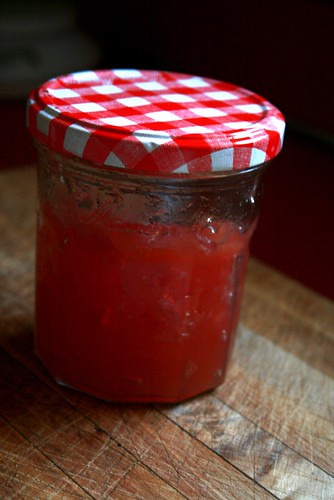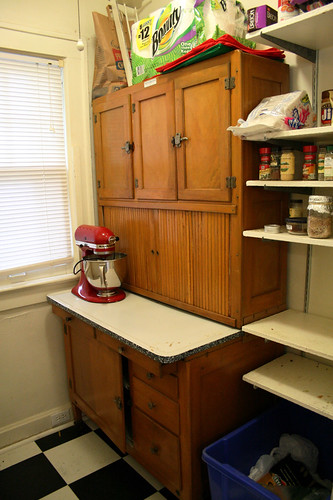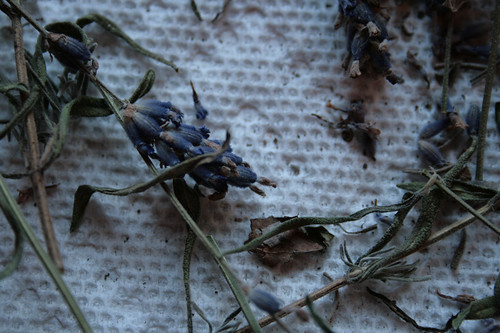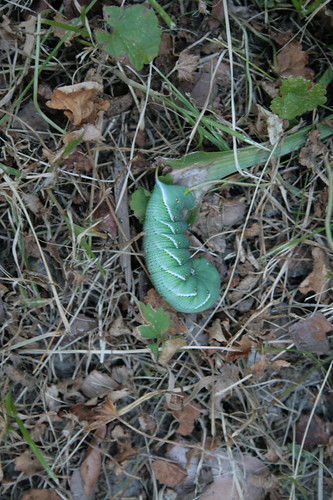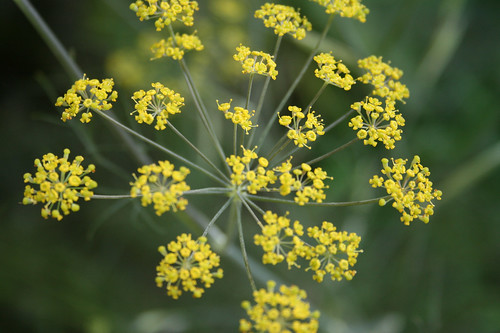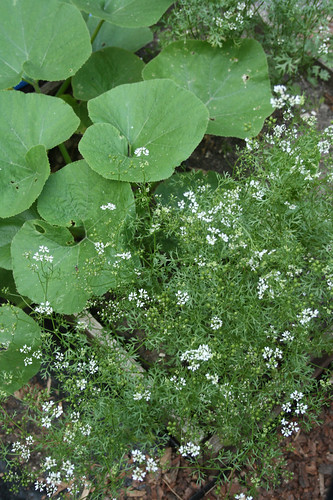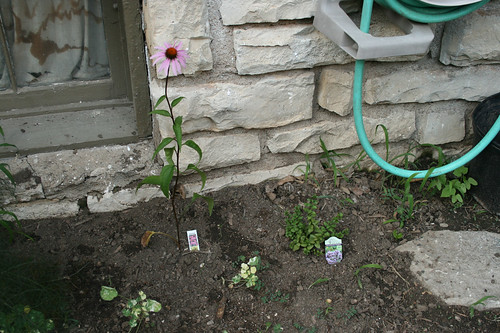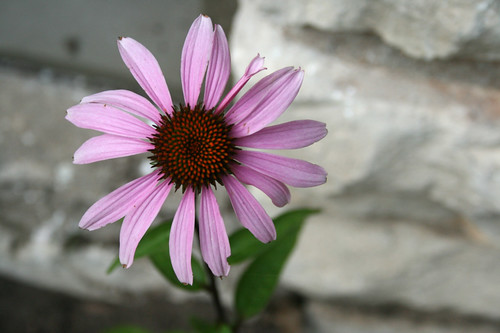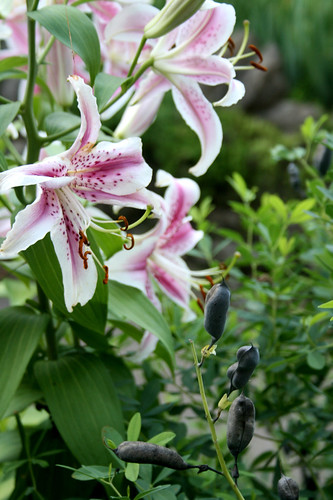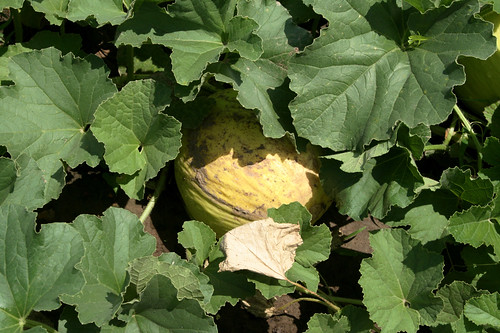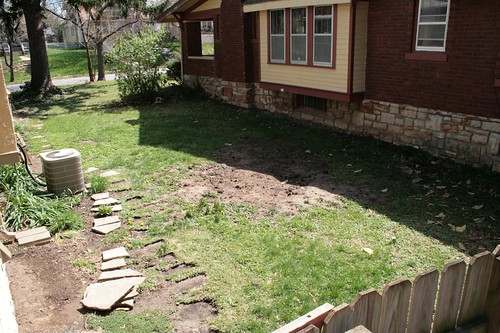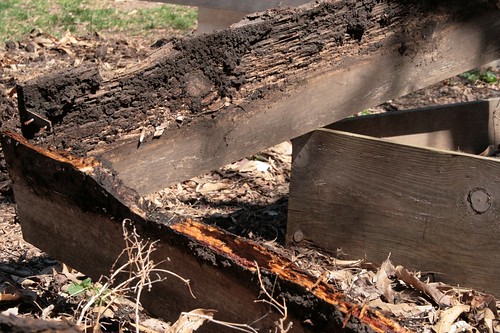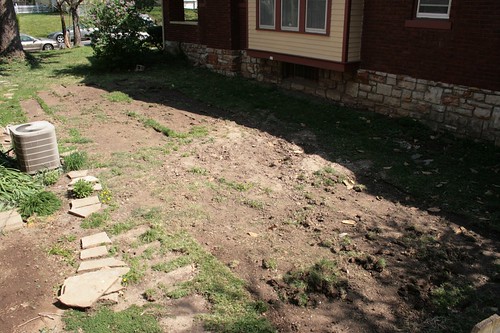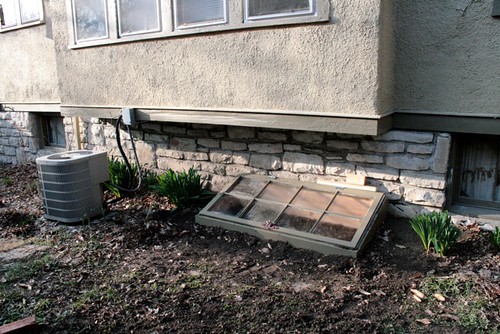Since the backbone of the new vegetable garden was completed, the last month in the garden has mostly been filled with busy work in between heavy bouts of spring rain. The last several days have been thankfully dry, leaving me plenty of time to wander around the garden. So I thought it might be nice to give a walk-through everything that's been going on.
Starting from the backyard, here's Molly busy with her usual chore, patiently waiting for squirrels:
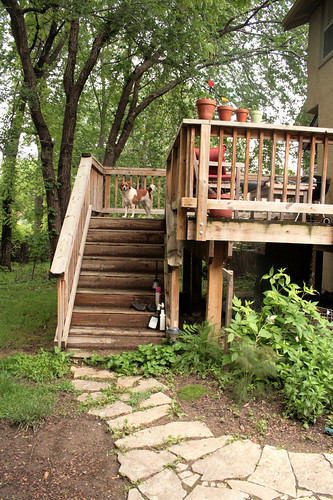
Of course, looking at this photo, I'm reminded of all the weeding that needs to be done on and around the path. The violets I let grow by the steps and now threatening to overtake the steps, and you might see the walnut seedling growing nearby. Maybe you can also see the yarrow, creeping thyme, raspberry, bronze fennel and mint? This bed is a bit formless, an afterthought compared to other beds, very much a work in progress.
Turning to where the old vegetable garden used to be, you'll notice big changes:
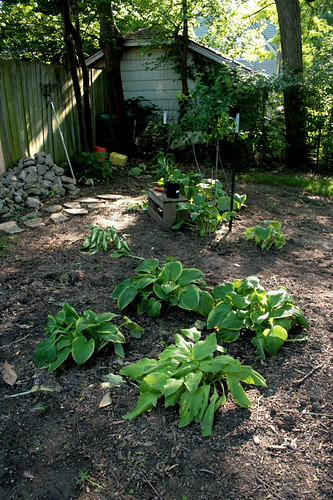
The beginnings of a woodland garden. Back in January, my mother and stepfather moved to a new house along a lake with plenty of garden, much of it filtered shade. Lots of hostas, more than she wanted. So when we were down a few weeks ago, she dug up a bunch and gave them to me. They're already serving as excellent filler, and there are plenty more to plant along the fence.
The focal point of the woodland garden is a serviceberry (sometimes called juneberry) tree purchased from
Suburban Lawn & Garden:
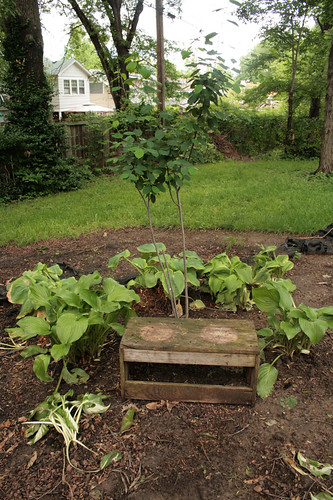
It's an understory tree that does well beneath the filtered shade of the redbuds and larger trees that surround our yard. In spring it produces a show of white flowers and produces small edible berries that attract birds. Apparently, the berries make good preserves, but much like crab apple, the fresh taste is too sour to be enjoyable. The tree should get about 20 feet high when fully mature, and we are attempting to stretch the trunks for a more open shape.
Turning back towards the patio, there's the new rain barrel we installed next to the gate:
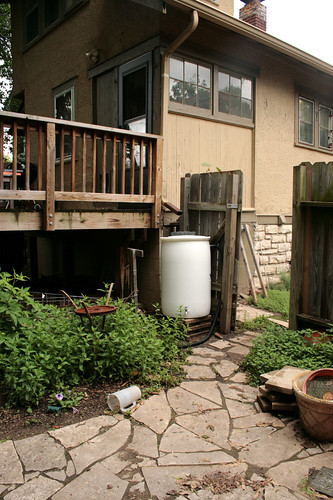
We might make further changes to the spot behind the gate, since we overshot the length on the downspout and the gutter is still prone to overflowing. Rather than struggle with the water, I'm considering building a little rain garden. This might also be a great spot for a native plant I really love called Joe-Pye weed.
Walking through the gate, you can see the other rain barrel we installed on the south side:
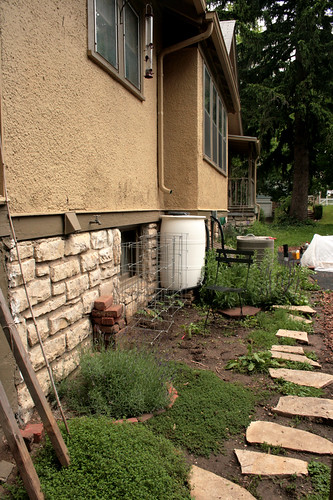
We got the rain barrels from a local non-profit called
Bridging the Gap, which facilitates recycling and other environmental programs in the Kansas City area. They do workshops teaching folks how to build these things, but we decided to purchase a couple of pre-made barrels instead. At $65 a piece, they were a far better deal than anything from a catalog or online. Not so pretty, but I don't really care so much about that. With all the rain we've been having, I've already watered my plants from the barrels several times.
In this photo, you'll also notice my tomato cages and filled-out flower/herb border. The lavender and thyme plants have really taken off this year. Here's another photo taken a few steps down the path:
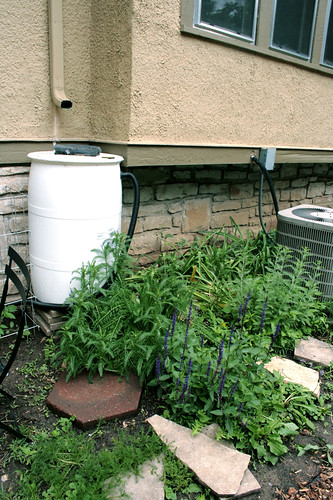
You can see how the yarrow, salvia, and perovskia are doing quite well. The pale coneflowers are a bit too slender and diminutive to be seen in the background, but I'm hoping that with some time they will spread. They get around 3-4 feet tall in summer.
Along the path near the gate, you can still find some pennyroyal:
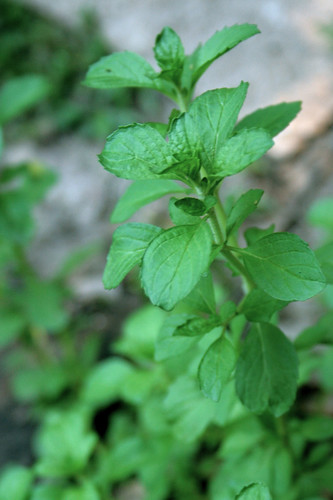
Beside the gate is my new bed for the raspberries:
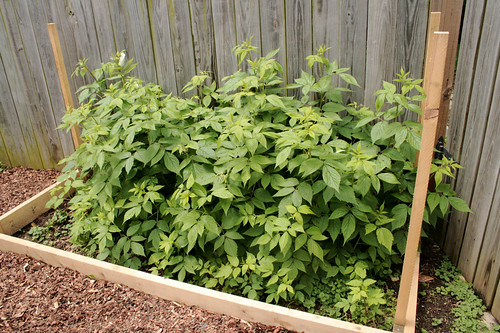
As mentioned previously, it's 'Caroline', ever/fall-bearing variety that produces big juicy red fruits from August to October. Soon I'll string some wire or twine along the posts and bring a bit of order to this bed. I'm waiting until fall/winter pruning before filling the box up with soil.
On to the vegetable beds! Look at the lovely little surprise I discovered a couple weeks back:
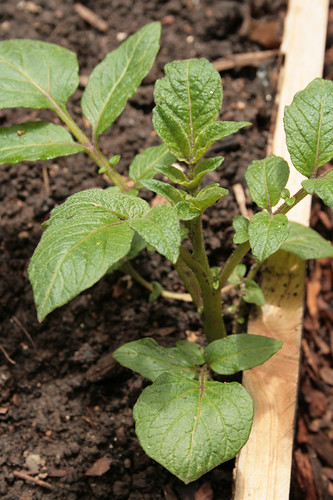
It's a volunteer potato in my hot pepper and basil bed. When we dug up the soil from the old boxes, I searched for any remaining potatoes and other bulbs and roots, but found nothing. So imagine my surprise when this little baby popped up. It's probably on of the 'Caribe' potatoes I grew last year. I'm going to let the vine grow and flower and see if it produces more of those violet-skinned beauties.
Elsewhere in the vegetable garden, a bush beans waits:

I've got two 2'x1.5' bush bean plot, but I failed to mark them after planting and am not sure which is the 'Gold Crop' and which is the 'Jade'. Guess I'll know when the pods start appearing this summer.
What else is growing in the vegetable garden? Well, we have some Swiss chard:
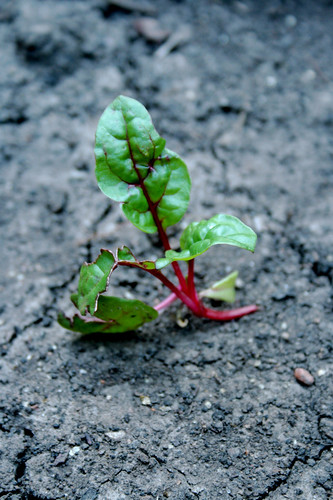
Typically, chard and spinach are started outdoors, but I started a few indoors, all of which died in the great cold frame debacle. The plants started outside have suffered a few insect attacks and are just now getting their 3rd and 4th leaves. I've had to cover the spinach and chard plots and do a bit of reseeding, but the chard is holding through admirably.
Despite similar insect attacks on the raab and cole crops, the plants have continued to persist:
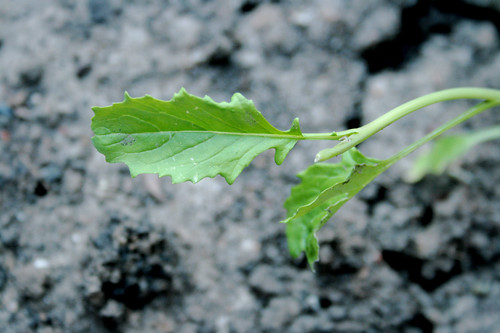
Actually, I fashioned makeshift cloches to ward off further damage until the plants got large enough to hold their own:
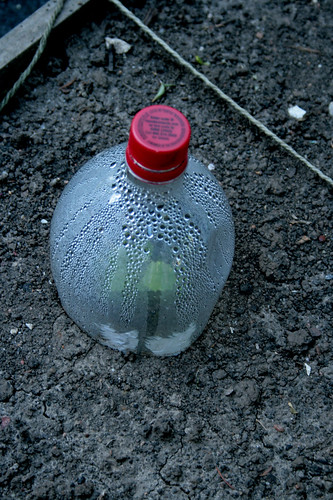
I'm sure you can tell that it's just the top of a soda bottle, the cap of which can be removed to let cooler air in. I've been saving these a few years for just such a purpose, and they work pretty well.
And here's a partial view of the vegetable garden from the east:
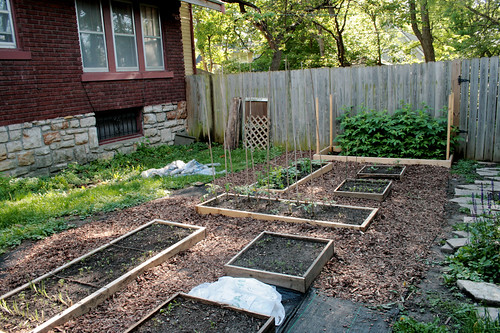
The mulch we bought ended up not being enough to cover all the paths, but at least we've got the landscape fabric to stifle the weeds. I also wish the beds looked more abundant than they do, but I'm hoping it looks more impressive by July.
Anyway, on to the front border I never seem to talk about anymore:

The Siberian irises look quite impressive, and the baptisia makes for a wonderful backdrop when in full bloom. The current plan is to remove the tall red-orange Asiatic lilies that clash with my relatively cool color scheme and give them a new home, perhaps elsewhere in the yard or with family. The 'Stargazer' Oriental lilies, which are a more pleasing fuchsia-streaked white, will go in that spot. Or perhaps that's where I'll put the lobelia syphilitica. I like how the reddish tones and white pop beside the blue and violet. The lobelia won't bloom until late summer and fall, at which time it'll be the main show.
But those irises look lovely...
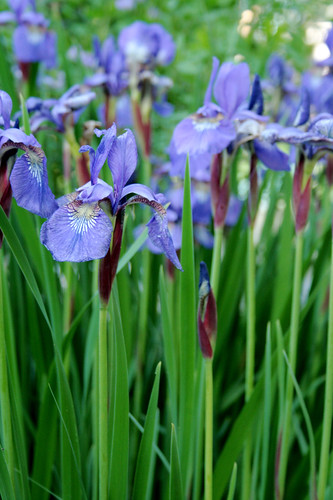
Don't they?
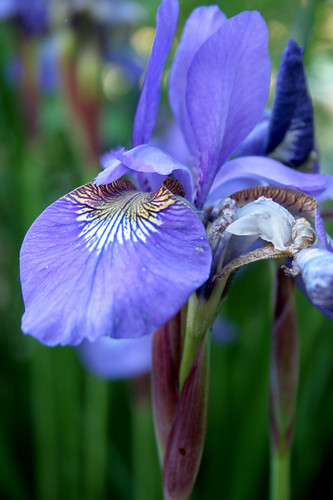
Elsewhere in the front garden are little surprises:
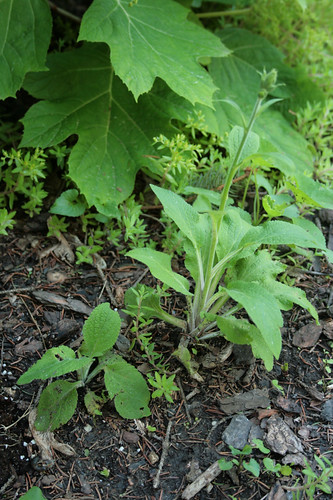
Finally, there's the rock garden I started last year in the northeast yard along the rock wall, a spot that is dry and gets a fair amount of sun during the day. The 'Ultra Violet' hybrid salvia (or desert sage) I planted last year is now in bloom:
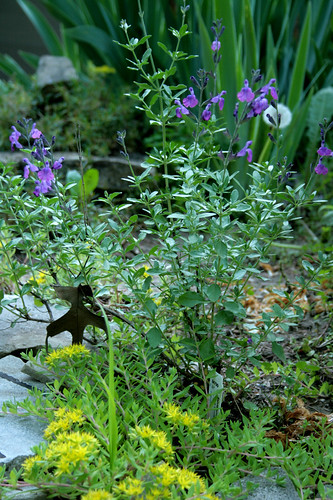
I think the yellow flower of the sedum makes a lovely contrast. Below that is one of the purple hens & chicks that I started with last year, along with a blue-green sedum I bought about a month ago:

I'm still looking for more succulents and alpines to fill the space, but as with most of the plots in my yard, I've decided to take a slow-paced piecemeal approach to design. Wandering through my garden, I'm starting to really love how everything's taking shape and looking more like the space in my head.



